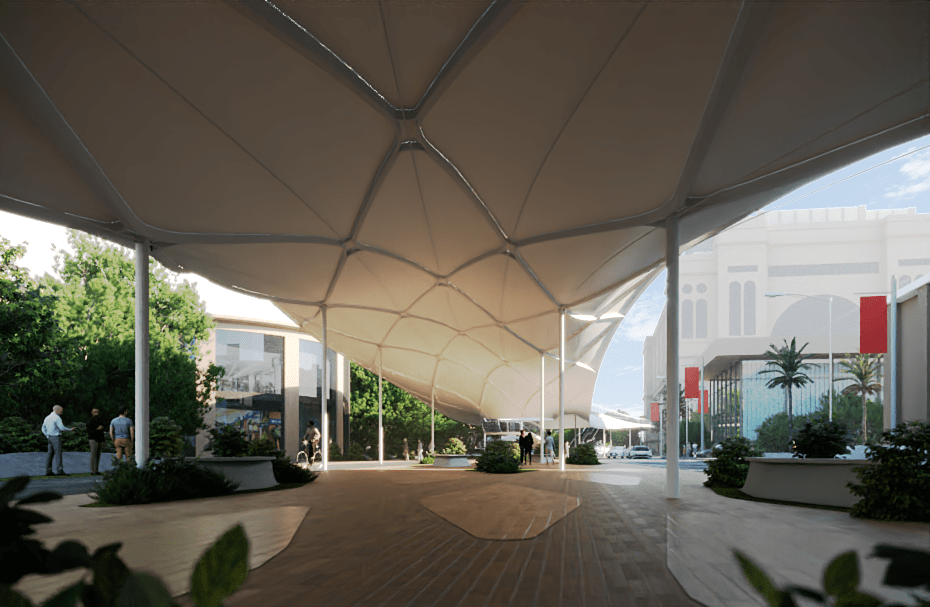The Top 8 Green Home Building Ideas and Techniques
It is imperative that we actively engage in environmentally friendly activities and are aware of our impact on the environment, as global warming is one of the main causes of extraordinary environmental changes.
Green home construction is a well-known and efficient method for energy reduction. It aids in environmental preservation and enables solar energy users to reduce their conventional energy costs. Here are the top 8 eco-friendly building methods and suggestions for homes.
Design Using Passive Solar
Using solar energy to naturally heat, cool, and light a structure without the use of mechanical or electrical systems is known as passive solar design.
The passive solar design incorporates features that catch, store, and distribute solar energy and takes use of the sun’s predictable course across the sky. It has elements like south-facing windows that let in sunshine, thermal mass materials that absorb and store heat, and shading mechanisms that regulate how much heat is gained and lost.
Both residential and commercial buildings can benefit from passive solar architecture, which can minimize utility costs and energy usage. Additionally, passive solar architecture can help create a more relaxing and healthful home or workplace.
Power-saving windows
Reduce the amount of heat transmission between the inside and exterior of a building to use less energy to heat or cool the building by using energy-efficient windows. These windows include several glass panes and low-emissivity coatings that reflect infrared radiation, keeping the building warmer and cooler depending on the season.
Gas fills between the panes are another feature of some energy-efficient windows that can lessen heat transfer.
Energy-efficient windows decrease drafts and cold spots, which enhance building comfort in addition to lowering energy expenses. They also contribute to noise reduction.
Climate, building orientation, and regional building codes are important considerations for choosing energy-efficient windows. The materials utilized, the quantity of panes, and other features might affect the price of energy-efficient windows. These windows help create a more sustainable and environmentally friendly structure while offering long-term energy bill savings.
Highly Effective Insulation
Compared to conventional insulation materials, high-performance insulation has a distinctive architecture that offers higher thermal resistance and energy efficiency. Fiberglass, cellulose, foam, and mineral wool are just a few examples of the materials used in high-performance insulation. High-performance insulation is more expensive than conventional insulation materials, but it can result in significant energy savings and boost a building’s comfort.
Efficacious Fixtures
Plumbing fixtures and appliances that are water-efficient are made to use less water without losing performance. These fixtures use less water than conventional fixtures, which contributes to water conservation efforts and lowers water bills.
Water-saving fixtures include dual-flush toilets, faucet aerators, and low-flow showerheads. Additionally, they can aid in lowering the amount of energy needed to pump and treat water, which can aid in lowering greenhouse gas emissions and energy costs.
Efficiency in Lighting
Lighting that uses less energy to produce light is referred to as being energy-efficient. It comprises energy-saving light bulbs like halogen incandescent bulbs, compact fluorescent lamps, and light-emitting diodes (LEDs). Compared to conventional incandescent bulbs, which only produce visible light using 10% of the energy they require, these bulbs use a great deal less energy.
Smart lighting controls, such as timers, occupancy sensors, and daylight sensors, can help with energy-efficient lighting. In order to save energy, these controls provide automated on/off switching and dimming based on occupancy and levels of natural light.
Systems for Renewable Energy
Renewable energy systems are tools and infrastructure created to produce power from renewable resources like solar, wind, hydro, geothermal, and biomass. In contrast to fossil fuels, which are limited resources that take millions of years to create, these energy sources are renewable because they gradually replenish themselves organically over time.
There are numerous types of renewable energy systems, including:
Solar energy systems: These systems use solar panels to collect solar energy and then transform it into electricity.
Wind energy systems: These systems absorb kinetic energy from the wind and transform it into electricity using wind turbines.
Hydro energy systems: These systems create power by turning turbines with the force of moving water.
Geothermal energy systems: These systems use the earth’s heat to produce electricity or heat structures.
Biomass energy systems produce electricity or heat buildings by burning organic materials like wood or agricultural waste.
Renewable energy systems can lessen reliance on imported energy sources and generate new employment in the sector’s expanding demand.
rooftop plants
Planting vegetation on a green roof creates a roof garden. It can enhance air quality, lessen the impact of the urban heat island, and provide a habitat for wildlife. Green roofs can also aid with energy efficiency and home insulation.
Sustainable Resources
Sustainable building materials can lessen a home’s environmental effects, such as bamboo flooring or countertops made of recycled glass. Many environmentally friendly materials are long-lasting and low-maintenance, which can help customers save money over time. We may experience a cozy, energy-efficient, and ecologically friendly living area by implementing these top 8 tactics into our house and place of work.
More on INJ Architects:
